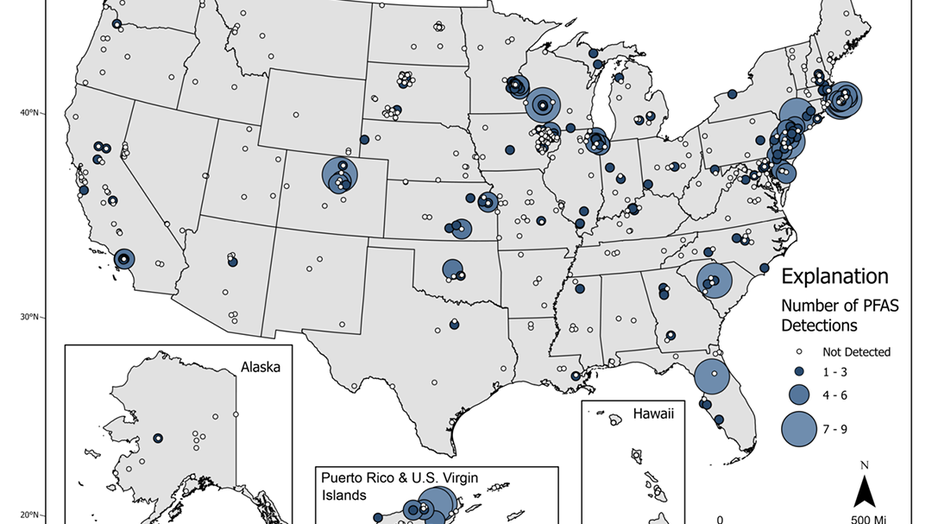Are PFAs in NYC tap water? Check water reports in your zip code
FILE - A photo illustration of tap water in a clear glass drinking glass is pictured on June 15, 2021. (Photo by Ben Hasty/MediaNews Group/Reading Eagle via Getty Images)
NEW YORK - The EPA is imposing first-ever limits on certain "forever chemicals," known as PFAS, in tap water. This has New Yorkers asking: Are PFAS in NYC tap water? Is it safe to drink?
JUMP TO: Resources for checking water quality | What are PFAS?
At least 45% of the nation’s tap water was estimated to have one or more types of toxic PFAS, or perfluoroalkyl and polyfluoroalkyl substances, which are widespread and long-lasting in the environment, according to a 2023 USGS research report. Most of the exposure was observed near urban areas, including along the Eastern Seaboard, the research revealed.

This USGS map shows the number of PFAS detected in tap water samples from select sites across the nation. The findings are based on a USGS study of samples taken between 2016 and 2021 from private and public supplies at 716 locations. The map does no
According to Environmental Advocates NY, 300 water utilities across New York State will exceed these new EPA limits.
"New York has been an epicenter of PFAS contamination, from Hoosick Falls and Newburgh to Long Island and Rockland County," the organization said in a statement.
Resources for checking water quality in your zip code
- New York State Water Quality Report: NY's Annual Water Quality Report allows residents to learn about "the system’s water source, contaminants, and violations of drinking water regulations."
- Environmental Working Group’s Tap Water Database: The nonprofit's database shows pollutants detected from local water utilities.
- NYPIRG’s New York State Drinking Water Profiles Project
- New Jersey's State Water Watch
What are PFAS? What is the new EPA limit?
PFAS, also known as "forever chemicals," are hazardous because they don’t degrade in the environment and are linked to health issues such as low birth weight and kidney cancer.
They've been used in everyday products, including nonstick pans, firefighting foam and waterproof clothing. Although some of the most common types are phased out in the U.S., others remain.
PFAS is a broad family of chemical substances, and the new rule sets strict limits on two common types -- called PFOA and PFOS -- at 4 parts per trillion. Three other types that include GenEx Chemicals that are a major problem in North Carolina are limited to 10 parts per trillion. Water providers will have to test for these PFAS chemicals and tell the public when levels are too high. Combinations of some PFAS types will be limited, too.
Officials say this will reduce exposure for 100 million people and help prevent thousands of illnesses.
Health advocates praised the EPA for not backing away from tough limits the agency proposed last year. But water utilities took issue with the rule, saying treatment systems are expensive to install and that customers will end up paying more for water.
Utility groups warn the rules will cost tens of billions of dollars each and fall hardest on small communities with fewer resources. Legal challenges are sure to follow.
To learn more about PFAS, click HERE.
The Associated Press wire contributed to this report.

